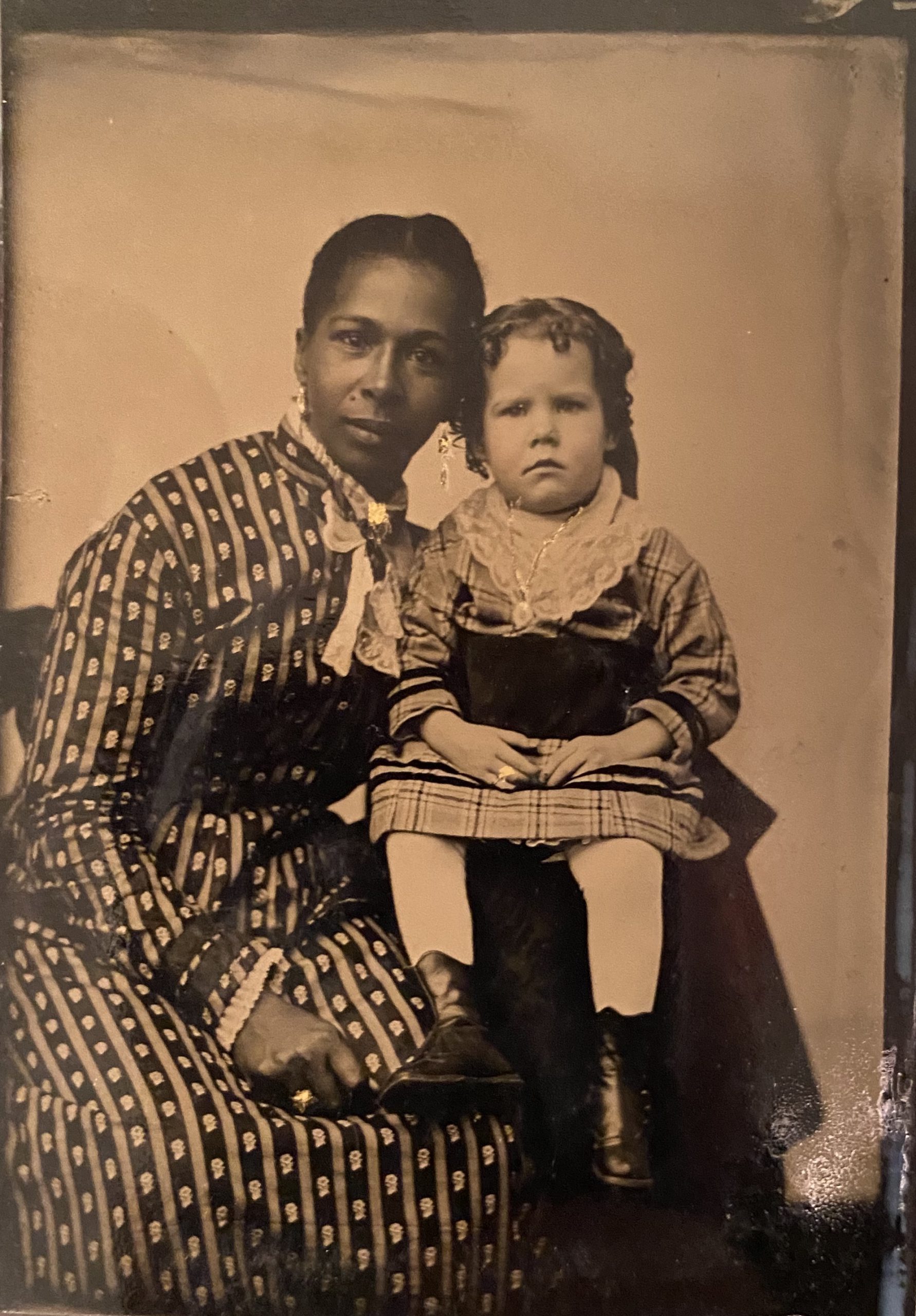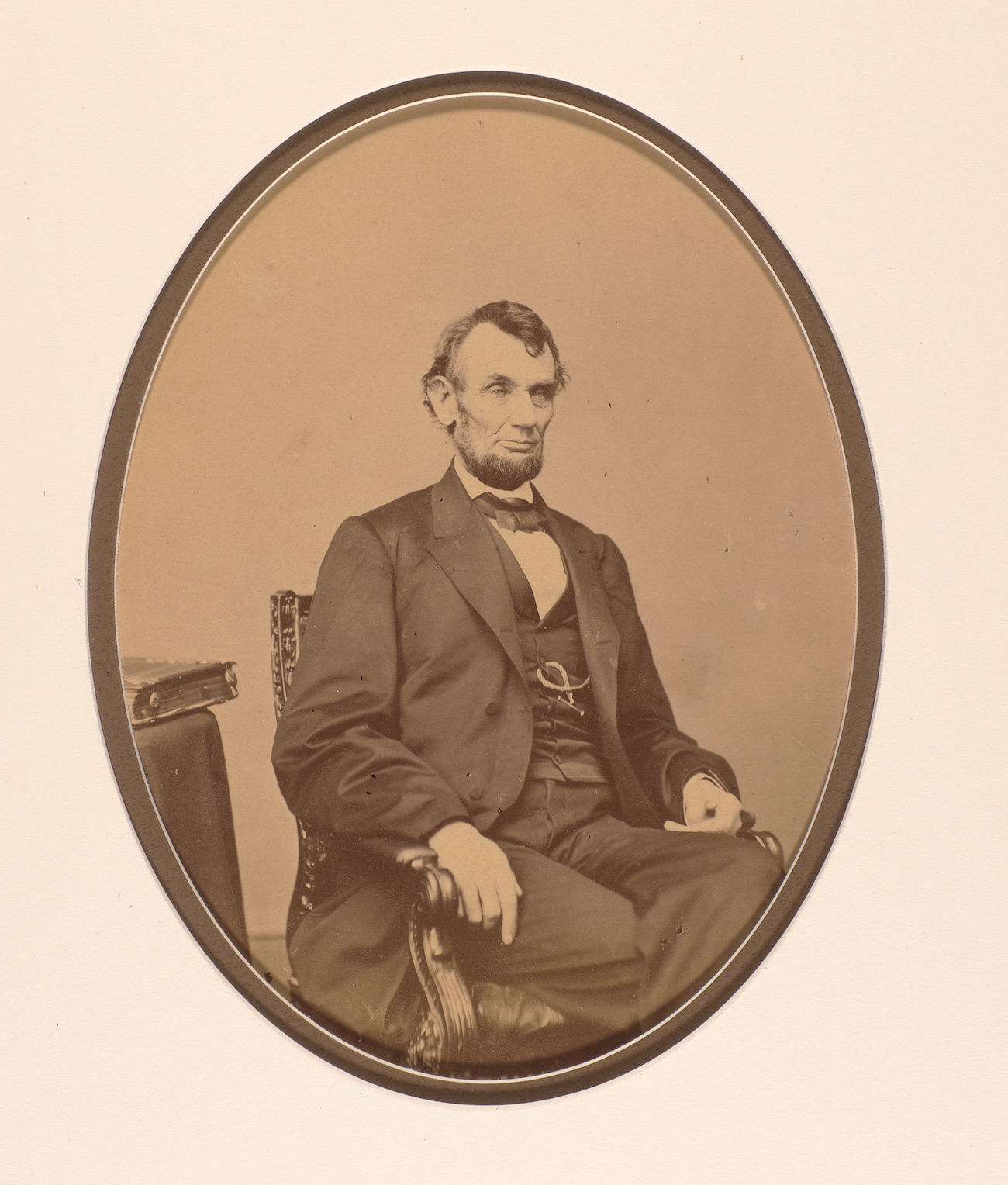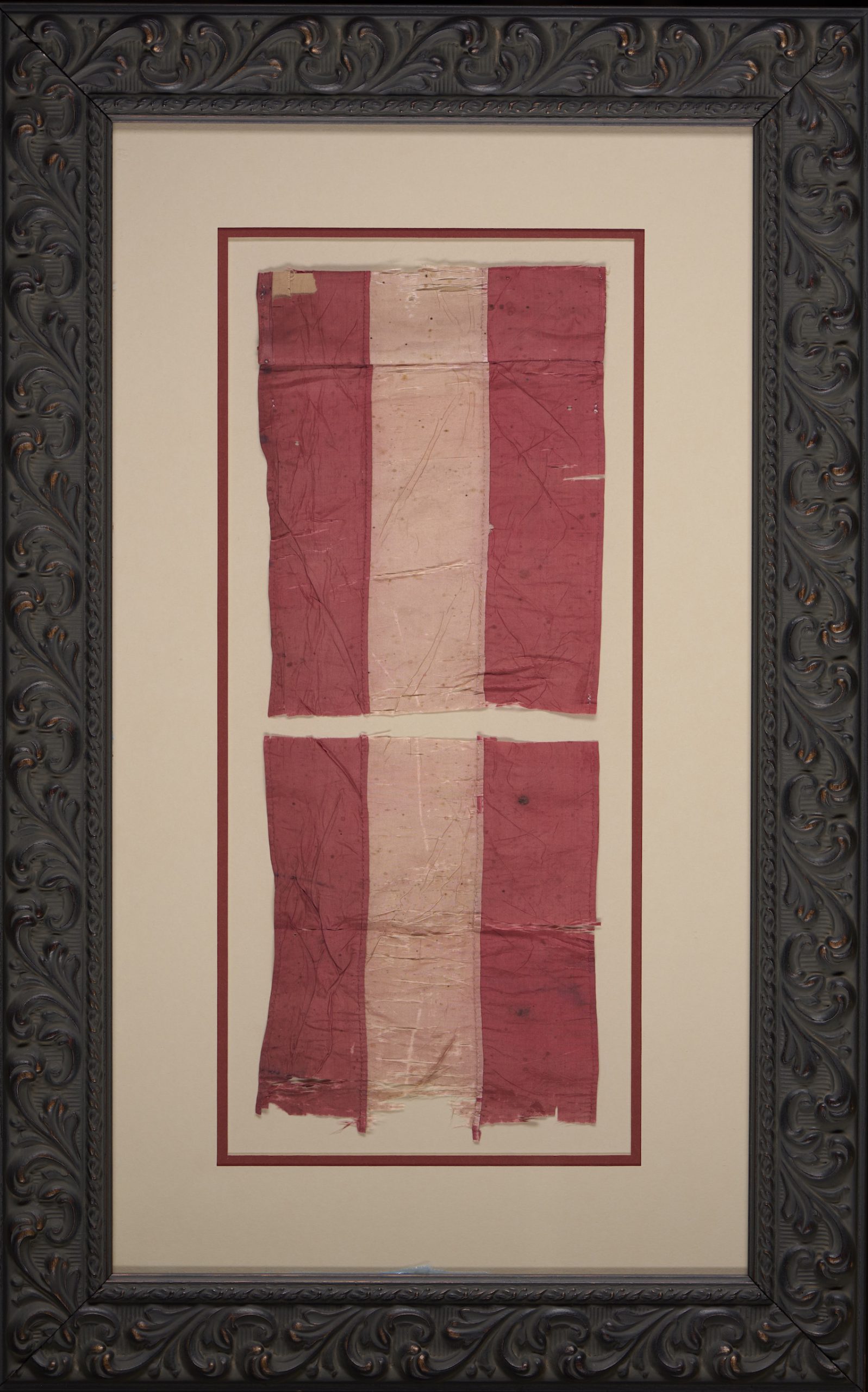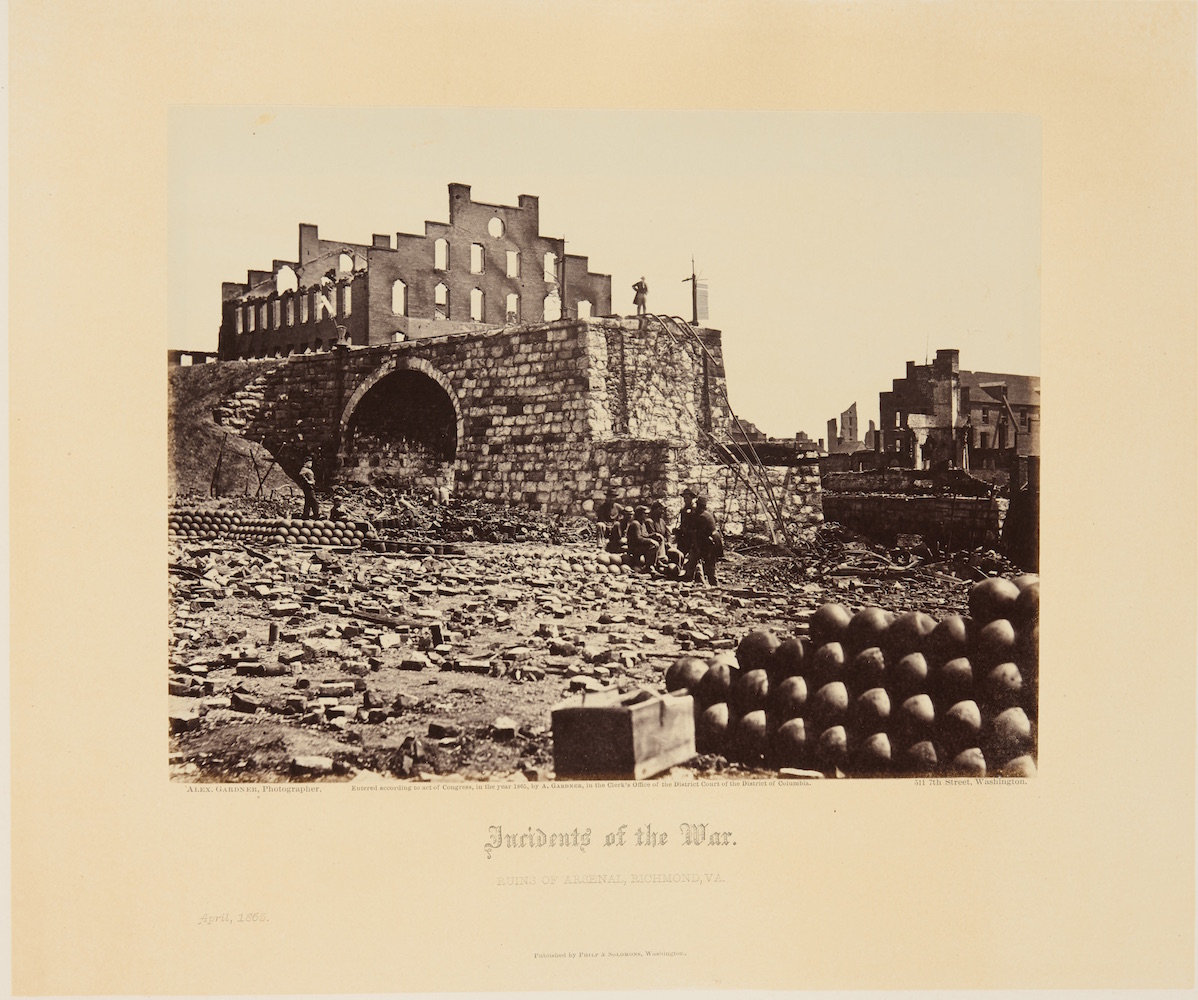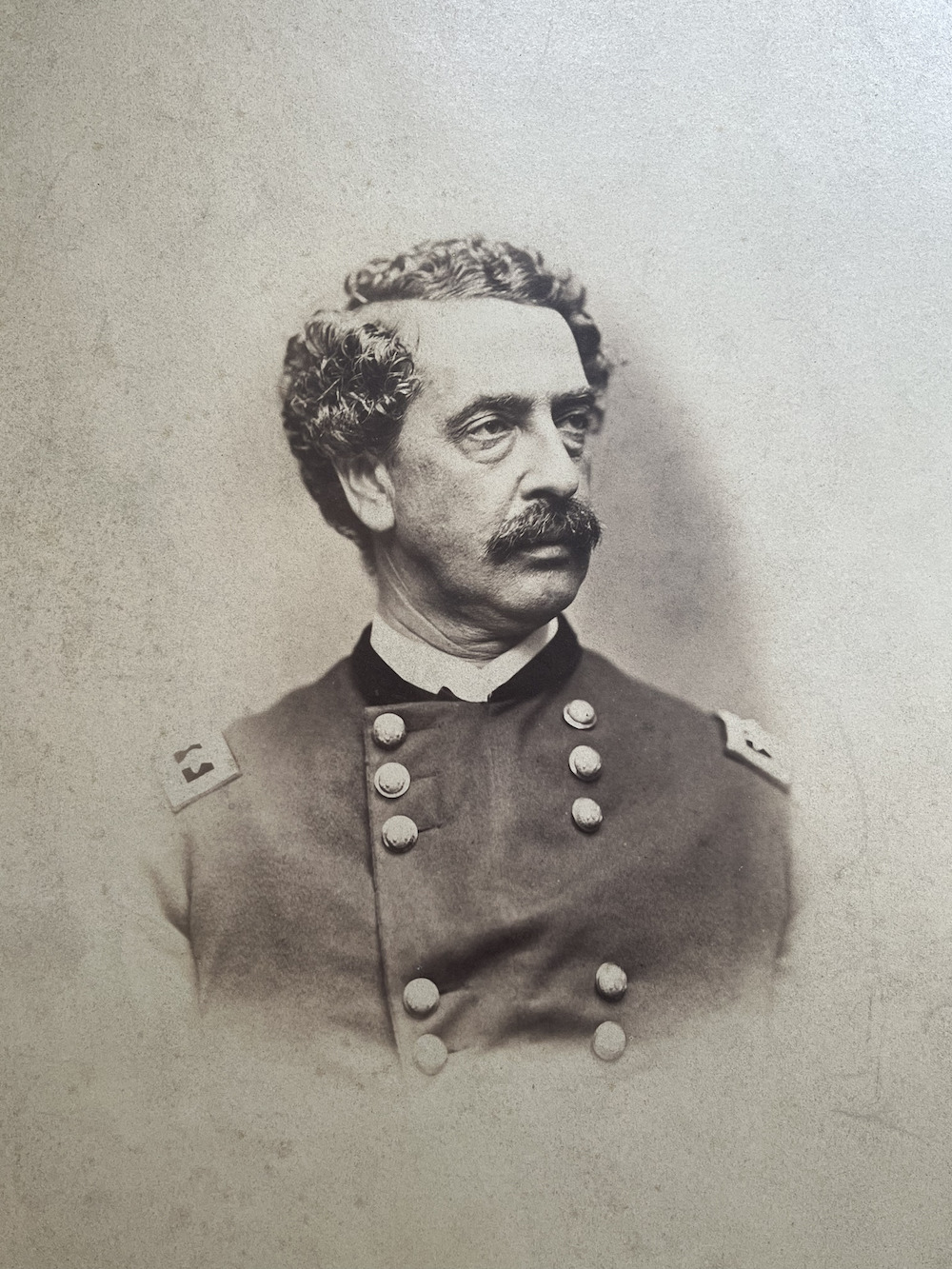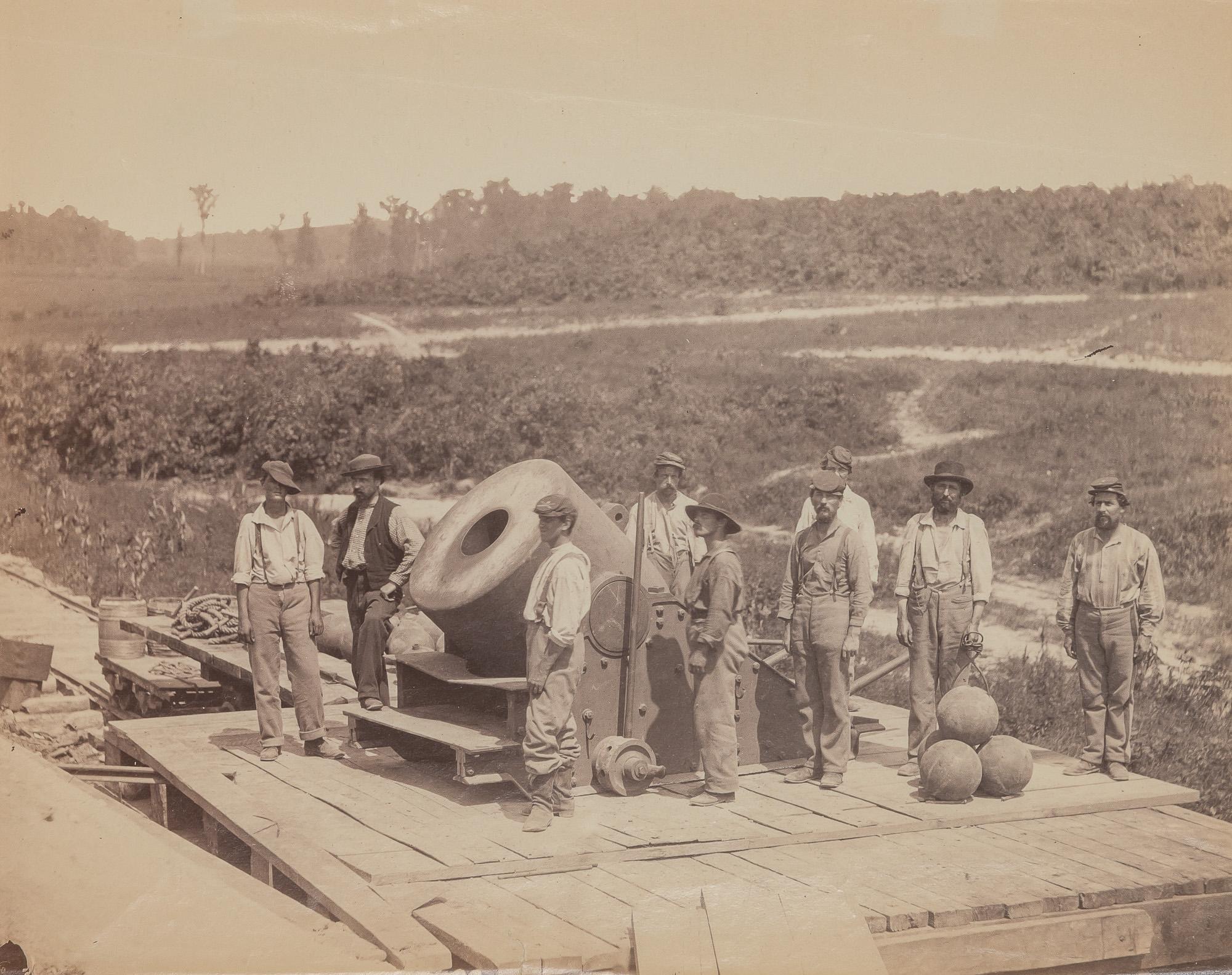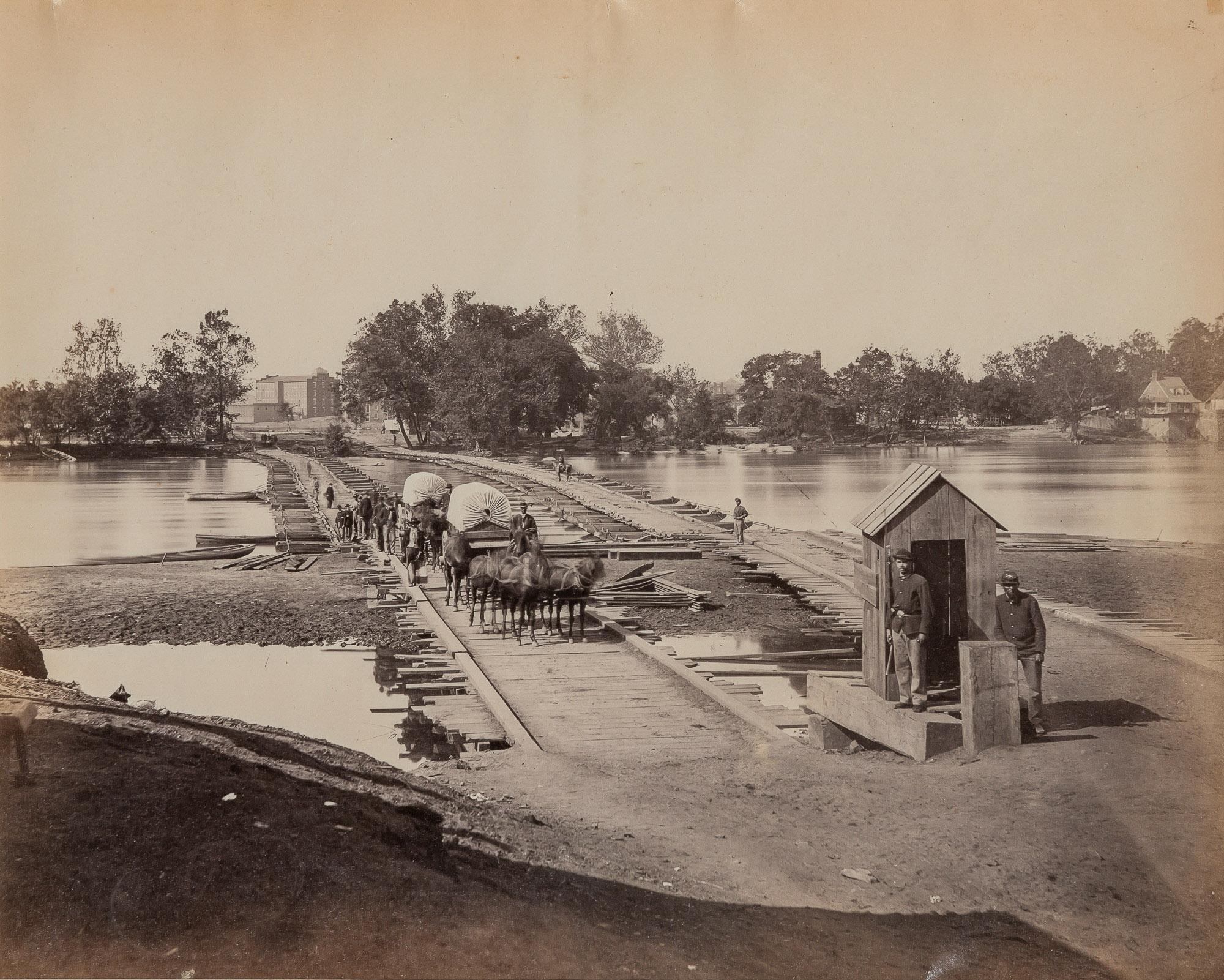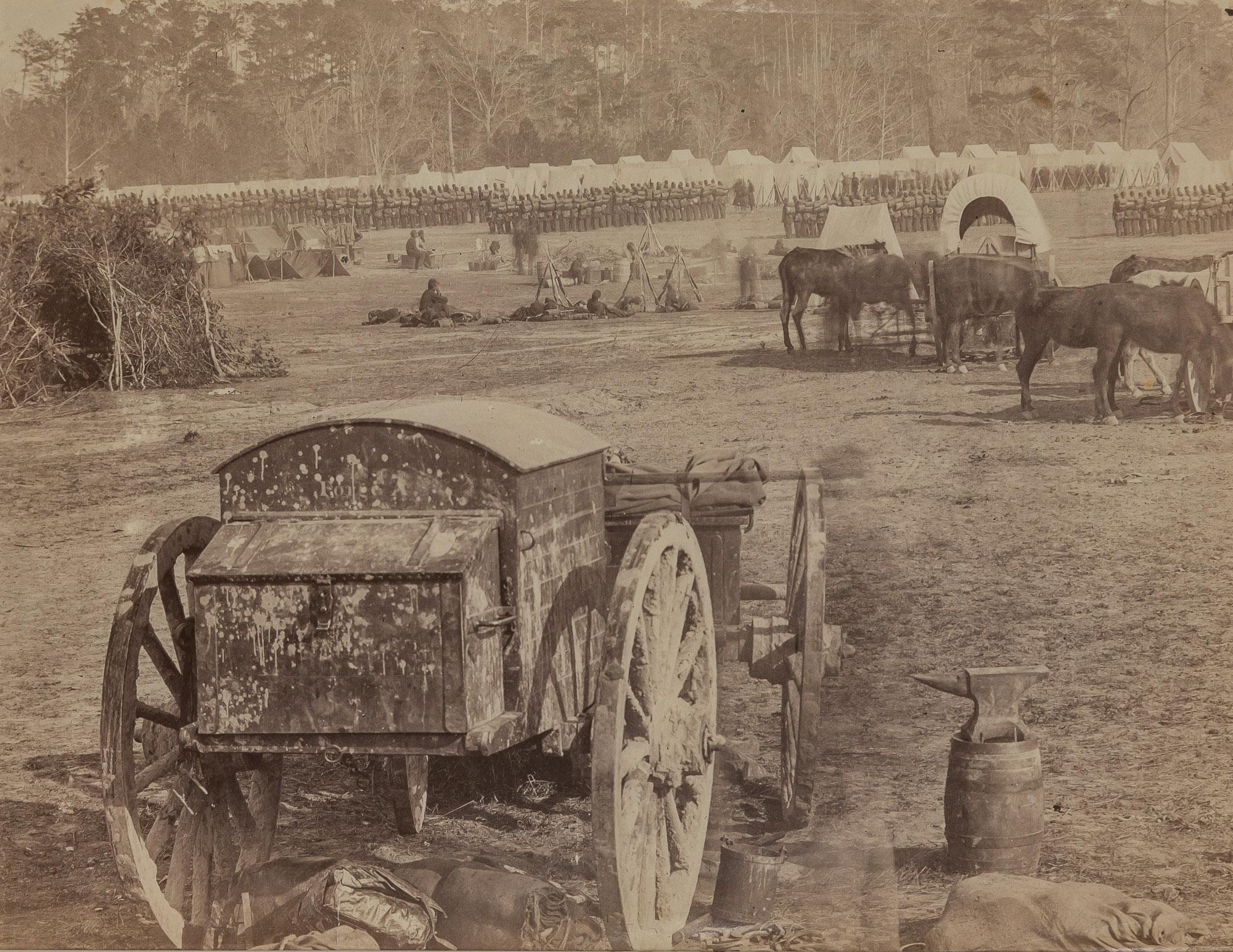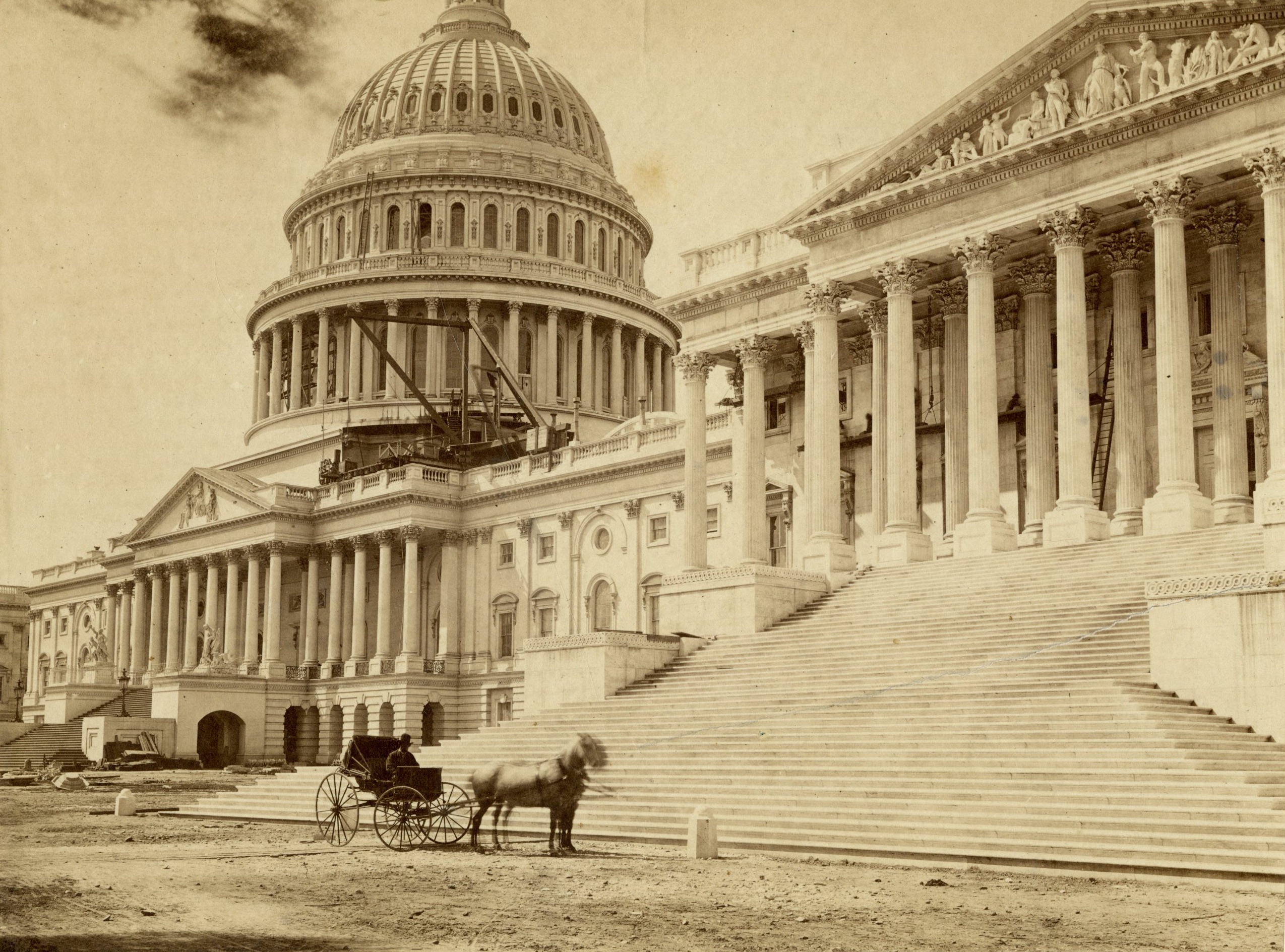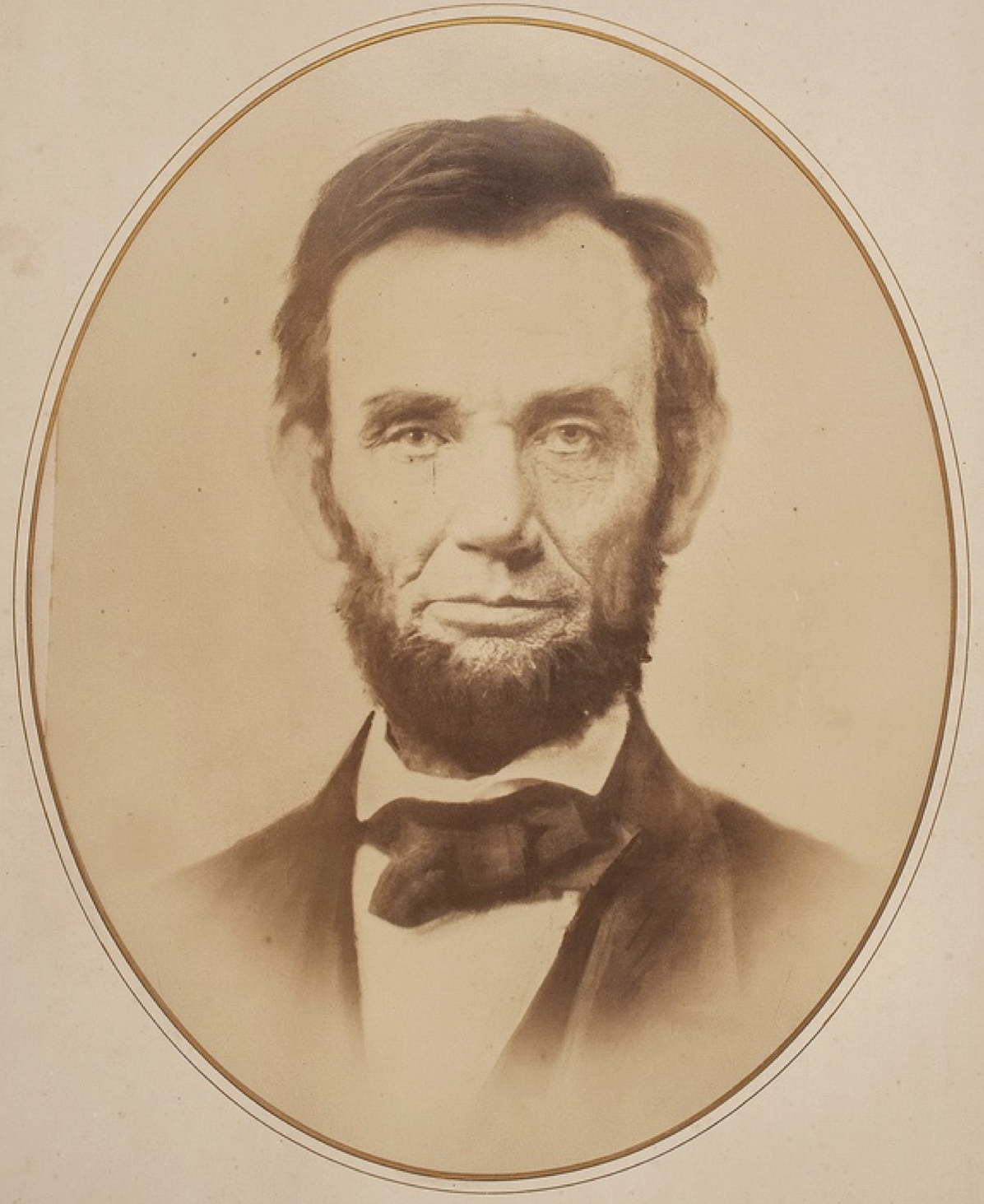-
(AFRICAN AMERICAN.)
Black woman with white child. No place, c. 1870-90
This delightful photograph shows a kind-looking young black woman sitting with a somewhat sour-looking young white child. Both are finely dressed for the occasion, the woman in an elegant dress with lace collar and the child in a dress with an elaborate lace collar. The photographer has highlighted in gold the fine jewelry each wears
$4,500
-
(LINCOLN, ABRAHAM.) BRADY STUDIO. Anthony Berger
Abraham Lincoln, seated portrait.. Washington: Mathew Brady Gallery, 9 February 1864
The classic Brady $5 bill photograph. This celebrated portrait, the basis for the five-dollar bill engraving used for most of the 20th century, is one of seven poses taken by Anthony Berger at Mathew Brady’s Washington, D. C. studio on February 9, 1864. The most prolific photographer of Lincoln, Brady himself did not actually operate his cameras during the war years, instead training and employing men like Alexander Gardner and his successor Anthony Berger, who took this picture, to operate the camera.
$15,000
-
LINCOLN, ABRAHAM
Autograph letter signed as President to Adjutant General Lorenzo Thomas [with] American flag bunting from Lincoln’s box at Ford’s Theatre. Washington, Executive Mansion, May 27, 1861
Abraham Lincoln, writing at the outset of the Civil War, recommends that the Army admit three volunteers from the highly divided city of Baltimore. He advises Adjutant General Lorenzo Thomas, “I hate to reject any offered from what is called a Southern State.” [offered with] Bunting from the presidential box at Ford’s Theatre.
two items: $275,000
-
GARDNER, ALEXANDER
Gardner’s Photographic Sketch Book of the War. Washington, D.C.: Philp and Solomons, [1865-66]
FIRST EDITION, FIRST ISSUE of the most famous photographically illustrated American book of the nineteenth century.
$275,000
-
(DOUBLEDAY, ABNER)
Maj. Gen. Abner Doubleday. No place, 1860s
This is a rare large format portrait of the famed general Abner Doubleday. Doubleday played a prominent role in the Union Army from the war’s outset. He was was second in command at Fort Sumter when the war started. He later commanded a division at Antietam, Gettysburg and other major battles.
$9,500
-
Knox, David
Mortar Dictator, in Front of Petersburg. Petersburg, Va., October 1864
This fascinating photograph is a variant of the image shown in Gardner’s Photographic Sketch Book of the War. In that image, a group of Union officers including the chief of artillery of the Army of the Potomac stands in the foreground, while five members of the mortar crew stand in the background. In the present photograph, shells have been moved to the foreground, and the full crew of nine men is present. The photographs are otherwise essentially identical.
$3,500
-
(PONTOON BRIDGE.) Photographer unidentified
Pontoon bridges across the James River at Richmond, Virginia. Richmond, 1865
This rare photograph shows two parallel pontoon bridges stretching across the James River at Richmond, Virginia, near war’s end. The Army Corps of Engineers constructed these bridges after retreating Confederate forces burned the bridges in 1865. The Dunlop Mills are seen on the other side of the river.
$2,200
-
(CUMBERLAND LANDING.) Gibson, James and John Wood
Inspection of Union Troops at Cumberland Landing, Pamunkey, Virginia. Cumberland Landing, Virginia, May 1862
This famous view shows a Union Army encampment at Cumberland Landing on the Pamunkey in Virginia.
$3,500
-
(U.S. CAPITOL.) Alexander Gardner
East Front of the Capitol. Washington, c. 1864
This photograph by Alexander Gardner shows the Capitol as it was during Lincoln’s presidency. Scaffolding, cranes, ladders, and other construction equipment are visible. The East Front of the Capitol was the site of Lincoln’s inaugurations in 1861 and 1865.
$3,800
-
(LINCOLN, ABRAHAM.) Alexander Gardner
Abraham Lincoln. Washington, November 8, 1863
This famous “Gettysburg portrait,” with Lincoln looking directly into the camera, was made just days before he delivered the Gettysburg Address on November 19, 1863.
$32,000



